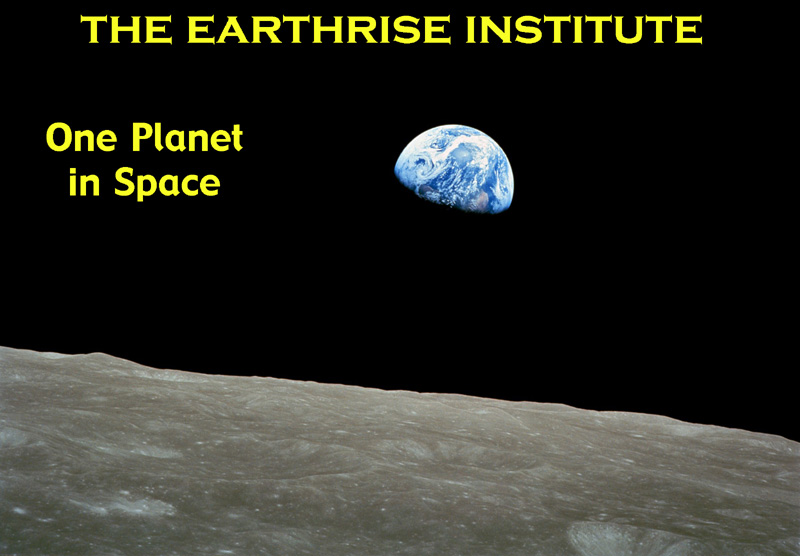
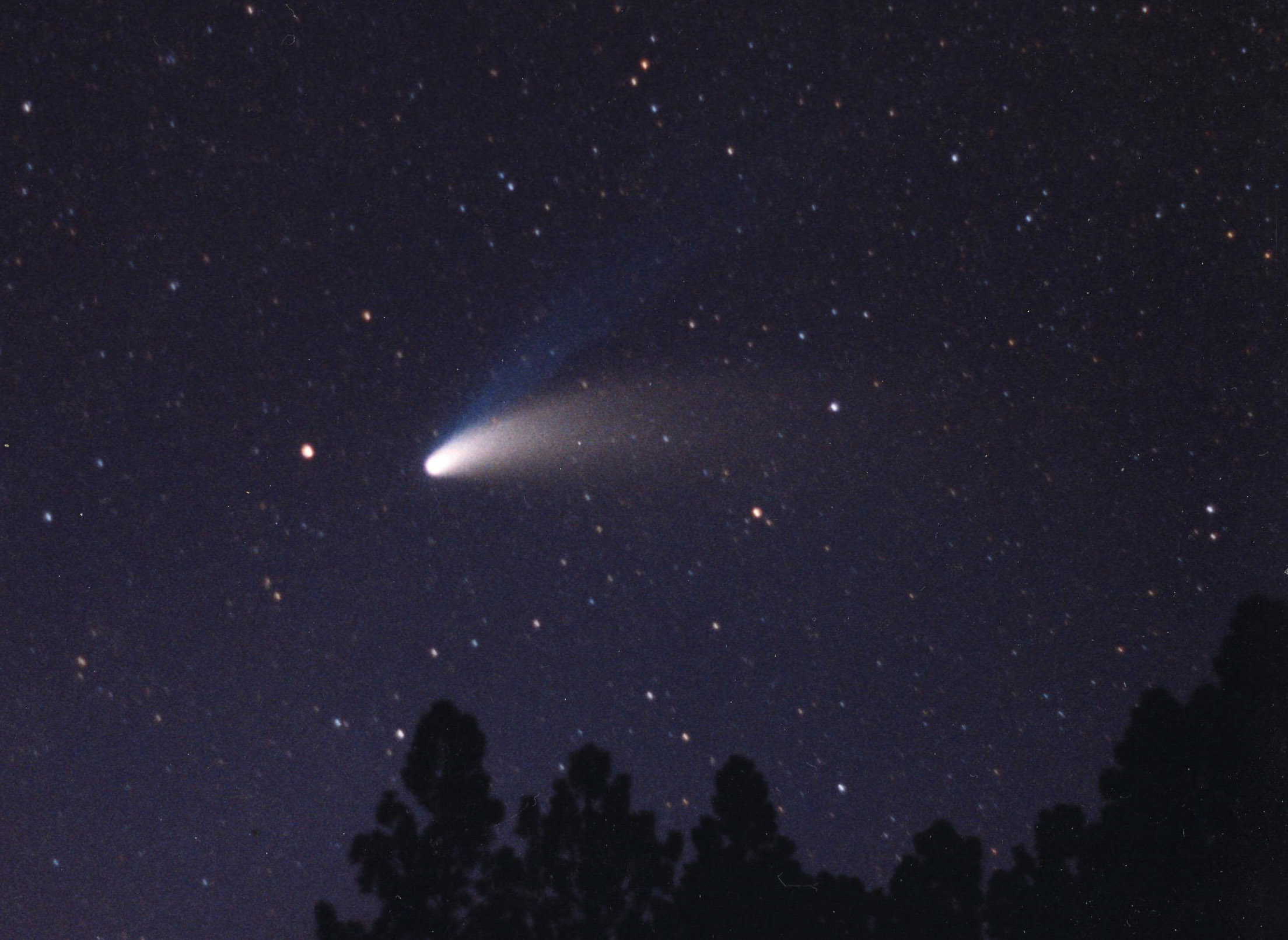
THE EARTHRISE INSTITUTE PRESENTS IMAGES TAKEN BY THE LAS CUMBRES OBSERVATORY NETWORK
Beginning in late 2017 I have been taking images with the telescopes of the Las Cumbres Observatory network as a part of my regular observing program of comets and near-Earth asteroids -- occasionally in successful attempts to confirm newly-reported discoveries -- and to serve as illustrative examples in my recently-completed “Ice and Stone 2020” educational program. I have selected for display here a sample of these images to demonstrate the work I have been doing and that I hope to incorporate into additional educational activities both here in the U.S. and internationally.
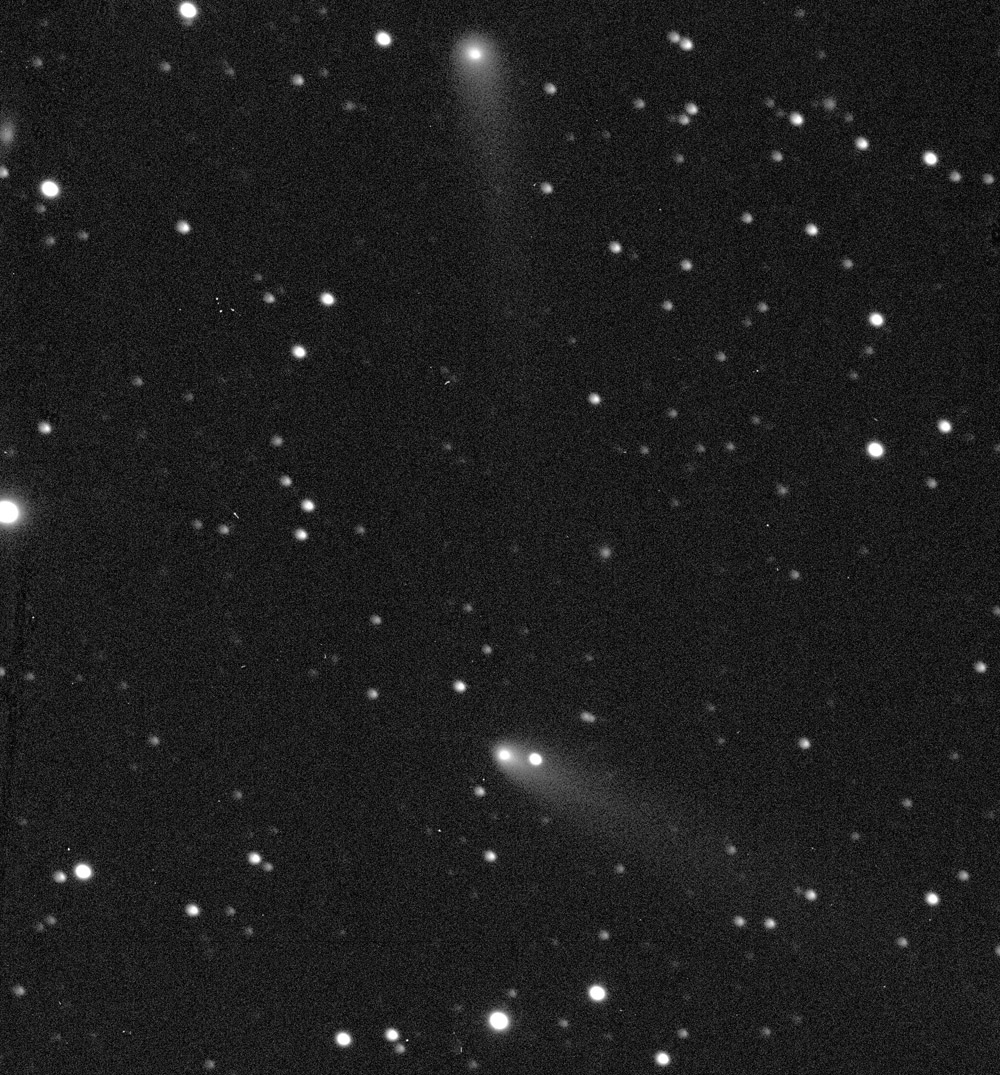
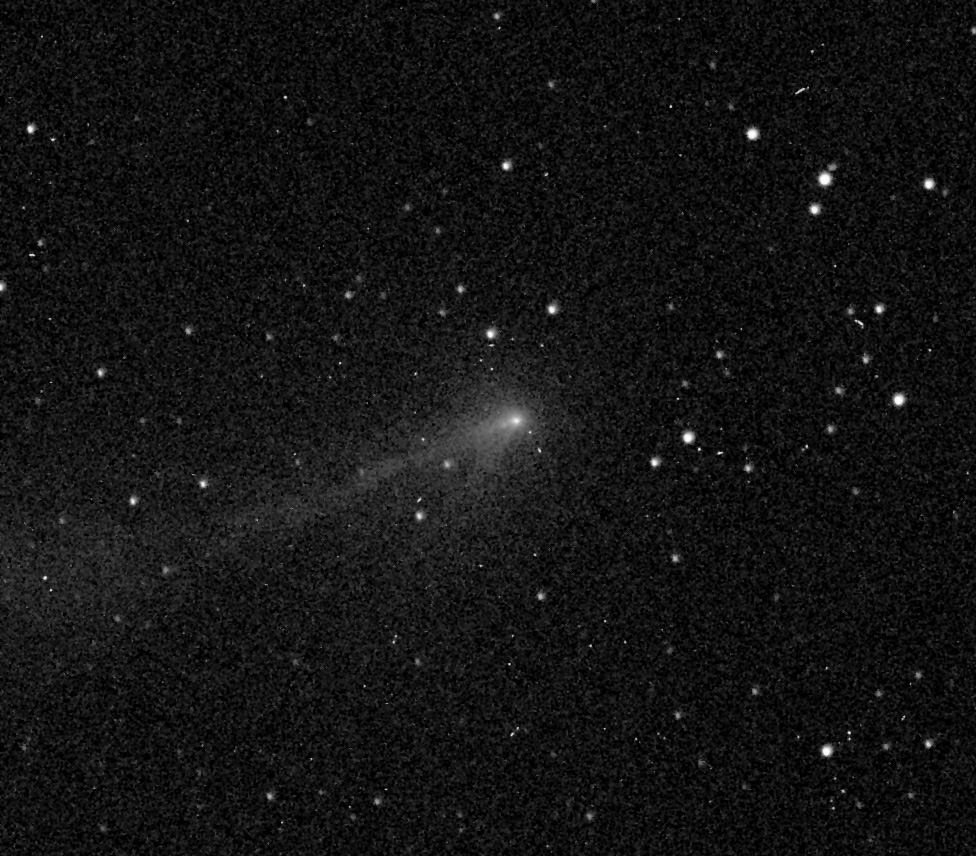 LEFT: A meeting of comets on September 7, 2019. The top comet is Comet ASASSN C/2018 N2 (a long-period comet), the bottom comet is Comet 260P/McNaught ( a short-period comet that returns every seven years). RIGHT: Comet PANSTARRS C/2016 R2 on January 8, 2018. This comet had a rare and unusual chemical composition which among other things created a distinctly-shaped and rapidly evolving tail.
LEFT: A meeting of comets on September 7, 2019. The top comet is Comet ASASSN C/2018 N2 (a long-period comet), the bottom comet is Comet 260P/McNaught ( a short-period comet that returns every seven years). RIGHT: Comet PANSTARRS C/2016 R2 on January 8, 2018. This comet had a rare and unusual chemical composition which among other things created a distinctly-shaped and rapidly evolving tail.
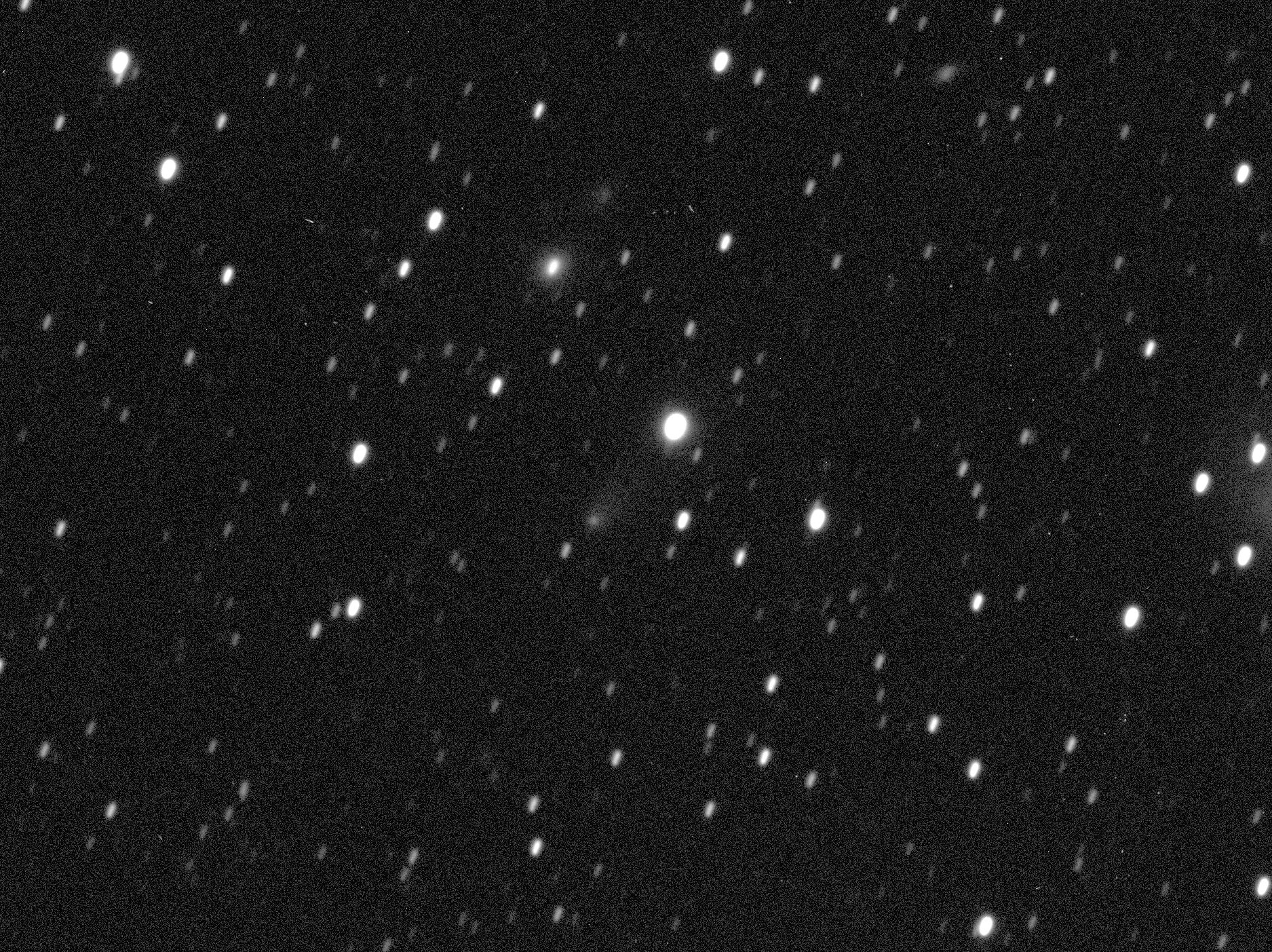
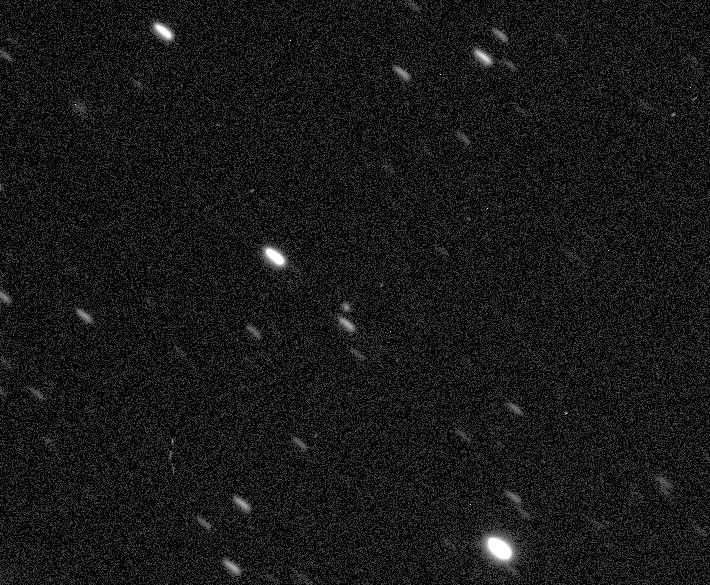 LEFT: The interstellar Comet 2I/Borisov -- one of only two known objects that have passed through the solar system after arriving from interstellar space, and then departing the solar system to continue travels through our galaxy -- on December 21, 2019, two weeks after its closest approach to the sun and one week before its closest approach to Earth. RIGHT: The asteroid 2020 AV2, the first-known -- and, so far, only known -- asteroid that orbits the sun entirely within the orbit of Venus. I took this image on January 7, 2020, three days after its discovery by the Zwicky Transient Facility survey program based in California. (The telescope followed the asteroid as it moved against the stars; it appears as a point, while the stars are trailed).
LEFT: The interstellar Comet 2I/Borisov -- one of only two known objects that have passed through the solar system after arriving from interstellar space, and then departing the solar system to continue travels through our galaxy -- on December 21, 2019, two weeks after its closest approach to the sun and one week before its closest approach to Earth. RIGHT: The asteroid 2020 AV2, the first-known -- and, so far, only known -- asteroid that orbits the sun entirely within the orbit of Venus. I took this image on January 7, 2020, three days after its discovery by the Zwicky Transient Facility survey program based in California. (The telescope followed the asteroid as it moved against the stars; it appears as a point, while the stars are trailed).
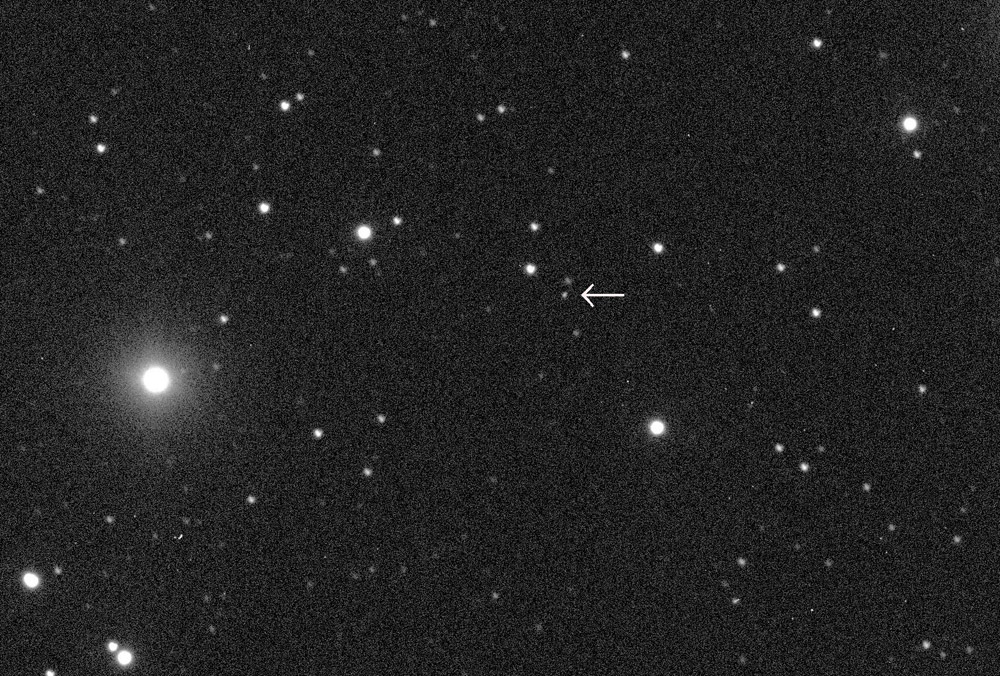
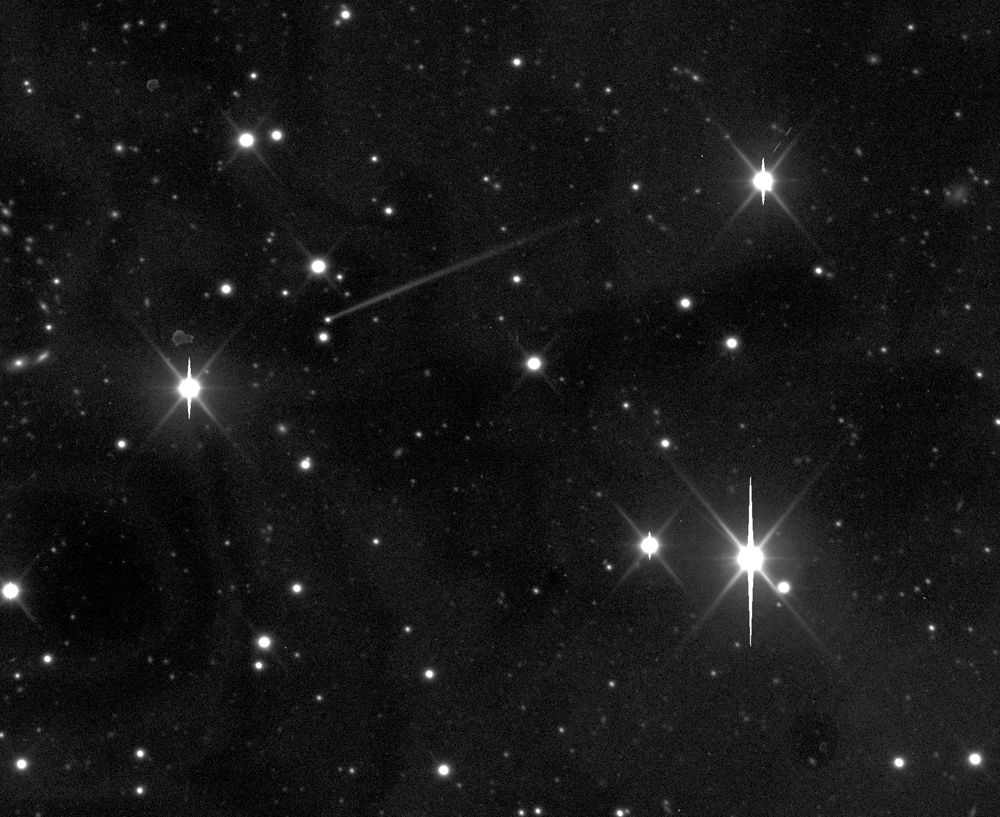 LEFT: The near-Earth asteroid (99942) Apophis, which will be coming extremely close to Earth -- within the orbital distance of geosynchronous satellites -- on Friday, April 13, 2029. Apophis makes a moderately close approach to Earth in early March 2021 and I took this image on January 22, 2021. RIGHT: The asteroid (6478) Gault in the main asteroid belt -- with a tail! After reading a report of this, I took this and other images on January 8, 2019 which helped in confirming the report, and am credited with such on the official announcement. Later analysis concluded that the tail was created when the asteroid's rapid rotation caused dust from its surface to be ejected into space, and then pushed back by the pressure of sunlight.
LEFT: The near-Earth asteroid (99942) Apophis, which will be coming extremely close to Earth -- within the orbital distance of geosynchronous satellites -- on Friday, April 13, 2029. Apophis makes a moderately close approach to Earth in early March 2021 and I took this image on January 22, 2021. RIGHT: The asteroid (6478) Gault in the main asteroid belt -- with a tail! After reading a report of this, I took this and other images on January 8, 2019 which helped in confirming the report, and am credited with such on the official announcement. Later analysis concluded that the tail was created when the asteroid's rapid rotation caused dust from its surface to be ejected into space, and then pushed back by the pressure of sunlight.
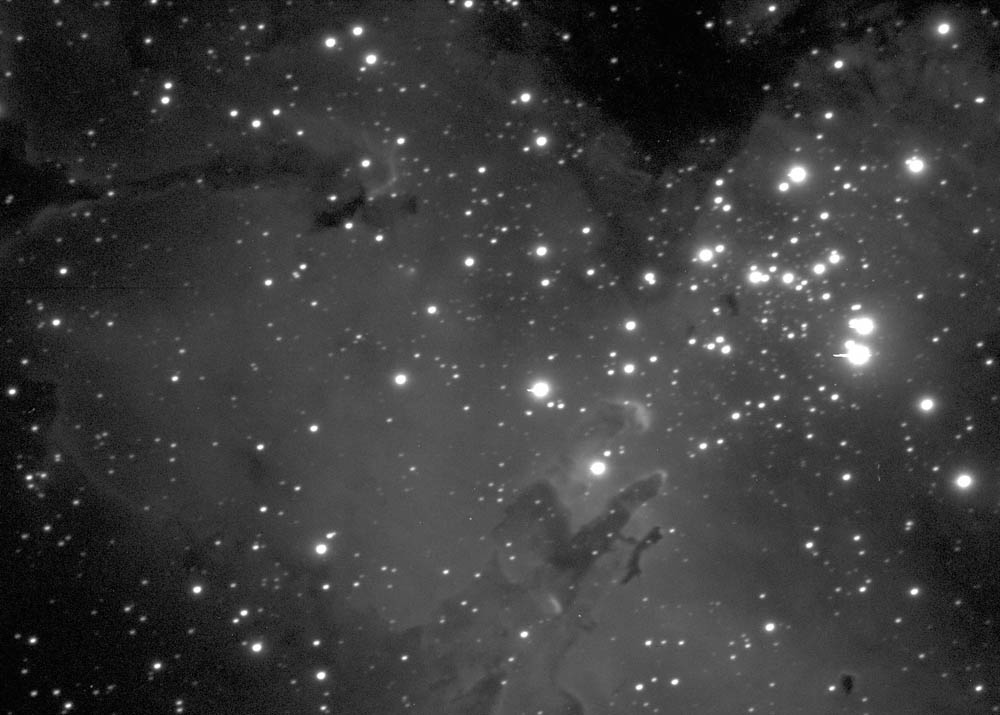
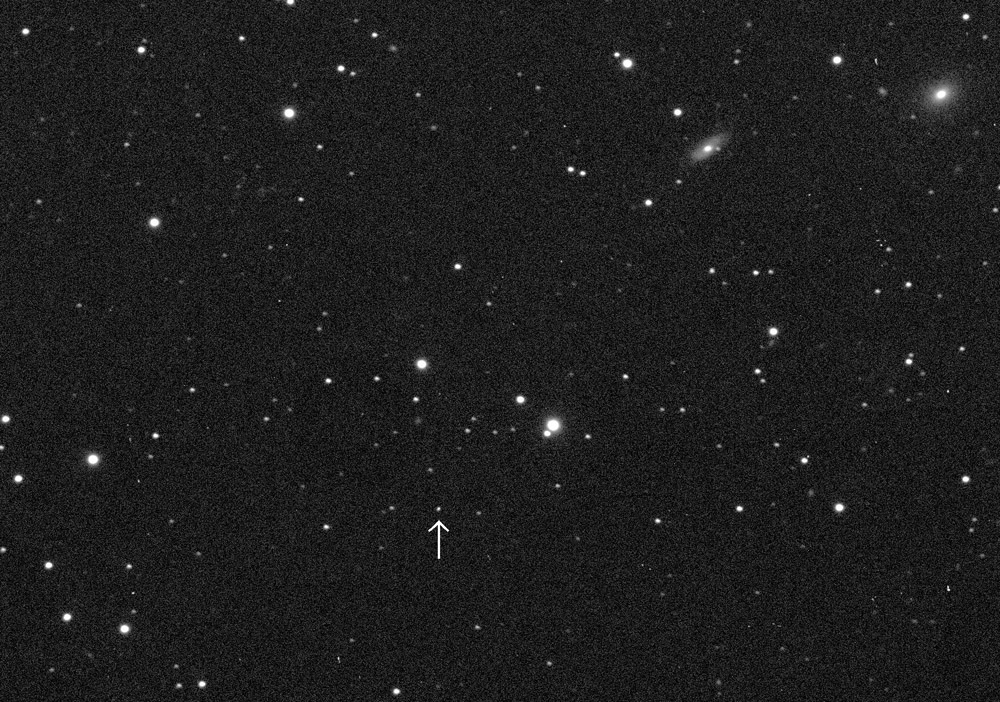 LEFT: The star cluster M16 and Eagle Nebula in the constellation Serpens. This is the site of the famous “Pillars of Creation” image taken by the Hubble Space Telescope. To the upper left of the bright star near the center is a line of three somewhat bright stars extending upward and rightward; making a triangle (to the left) with the top two stars of this line (and just to the right of a dim star) is a small fuzzy patch of light; this is Comet 68P/Klemola, a short-period comet with an orbital period of eleven years. I took this image on September 30, 2019. RIGHT: The asteroid (23238) Ocasio-Cortez in the main asteroid belt, on November 4, 2019. This asteroid was discovered in 2000 by the LINEAR program based in New Mexico, one of the first comprehensive survey programs. Following the naming convention for LINEAR-discovered main-belt asteroids, it was named for the future Congressional Representative from New York in 2007 (at that time a high school student), in honor of her winning second place in the Microbiology division in that year's Intel International Science and Engineering Fair.
LEFT: The star cluster M16 and Eagle Nebula in the constellation Serpens. This is the site of the famous “Pillars of Creation” image taken by the Hubble Space Telescope. To the upper left of the bright star near the center is a line of three somewhat bright stars extending upward and rightward; making a triangle (to the left) with the top two stars of this line (and just to the right of a dim star) is a small fuzzy patch of light; this is Comet 68P/Klemola, a short-period comet with an orbital period of eleven years. I took this image on September 30, 2019. RIGHT: The asteroid (23238) Ocasio-Cortez in the main asteroid belt, on November 4, 2019. This asteroid was discovered in 2000 by the LINEAR program based in New Mexico, one of the first comprehensive survey programs. Following the naming convention for LINEAR-discovered main-belt asteroids, it was named for the future Congressional Representative from New York in 2007 (at that time a high school student), in honor of her winning second place in the Microbiology division in that year's Intel International Science and Engineering Fair.
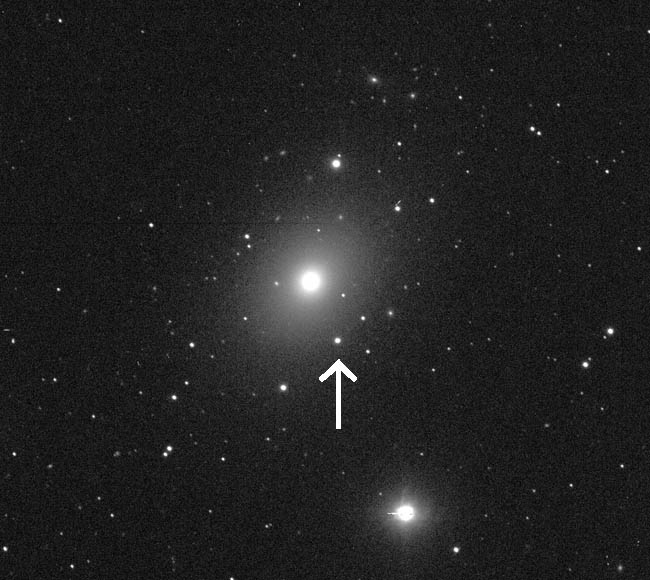
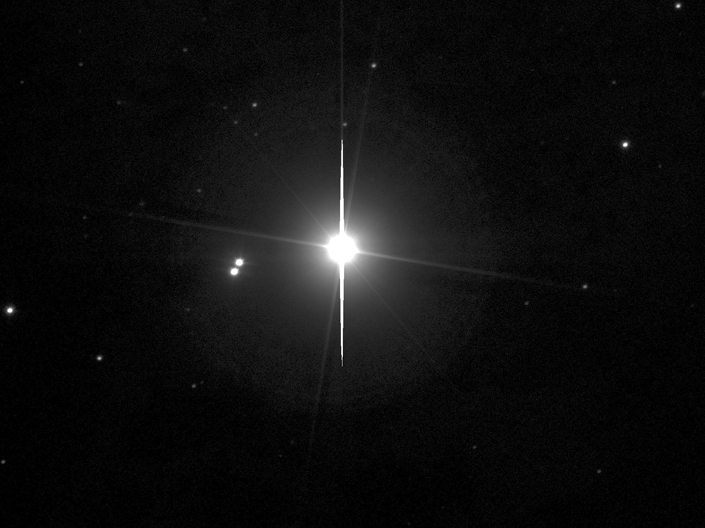 LEFT: The galaxy NGC 4636 in the constellation Virgo, on February 2, 2020. The arrow indicates Supernova 2020ue, which first appeared in that galaxy three weeks earlier. RIGHT: The very bright star in the center is 40 Eridani A, a star slightly smaller than our sun located 16 light-years away. (The “spikes” are artifacts.) According to unofficial Star Trek canon, this is the parent sun of the planet Vulcan. The pair of bright stars to the left are distant companions of 40 Eridani A; the upper star is a “red dwarf” (the most common type of star in our galaxy) and the lower one is a “white dwarf” (the leftover core of a more massive star that has shed its atmosphere). A “super-Earth” planet has actually been discovered orbiting close to 40 Eridani A, but this world is probably not capable of bearing life “as we know it;” for now, anway, Vulcan remains fictional.
LEFT: The galaxy NGC 4636 in the constellation Virgo, on February 2, 2020. The arrow indicates Supernova 2020ue, which first appeared in that galaxy three weeks earlier. RIGHT: The very bright star in the center is 40 Eridani A, a star slightly smaller than our sun located 16 light-years away. (The “spikes” are artifacts.) According to unofficial Star Trek canon, this is the parent sun of the planet Vulcan. The pair of bright stars to the left are distant companions of 40 Eridani A; the upper star is a “red dwarf” (the most common type of star in our galaxy) and the lower one is a “white dwarf” (the leftover core of a more massive star that has shed its atmosphere). A “super-Earth” planet has actually been discovered orbiting close to 40 Eridani A, but this world is probably not capable of bearing life “as we know it;” for now, anway, Vulcan remains fictional.
COMET NEOWISE C/2020 F3
During July 2020 the northern hemisphere witnessed the best comet that had appeared in its skies since the beginning of the 21st Century. Its appearance came at an especially interesting time for me, as it helped me celebrate the 25th anniversary of my discovery of Comet Hale-Bopp.
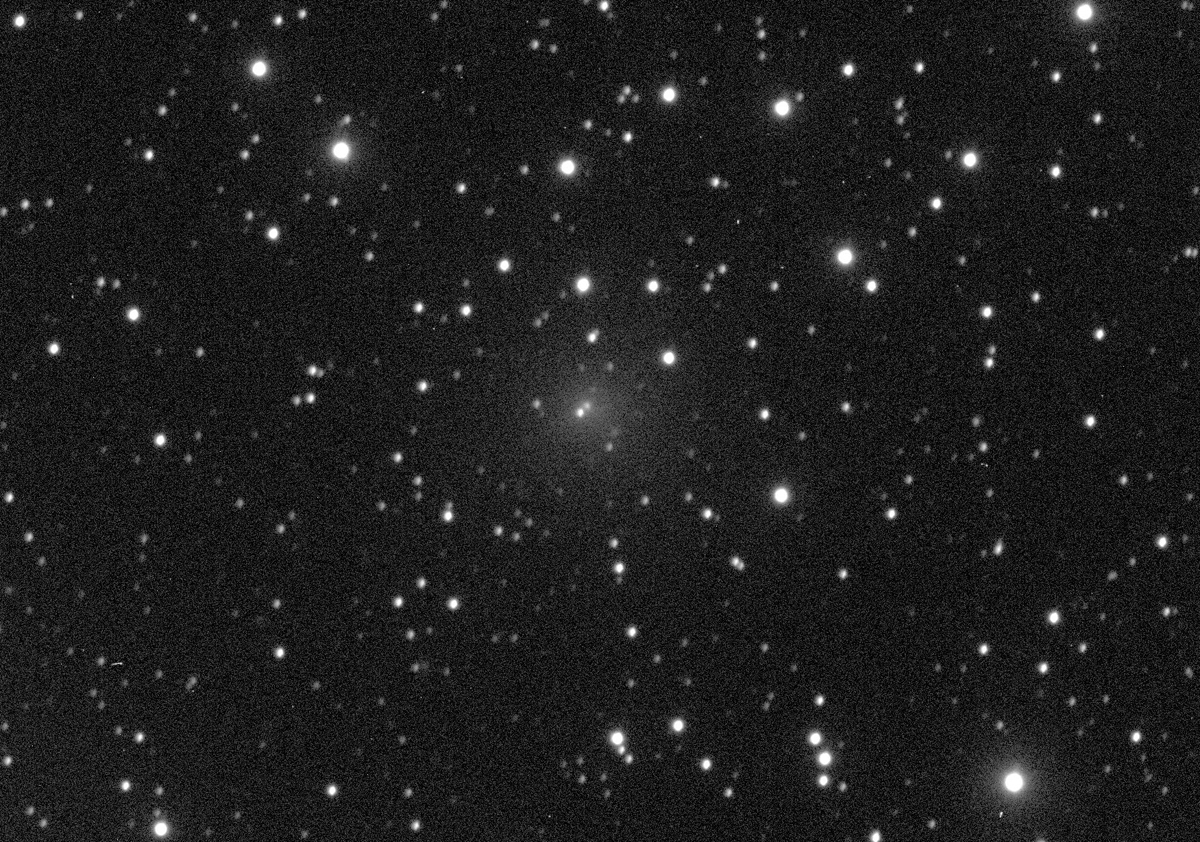
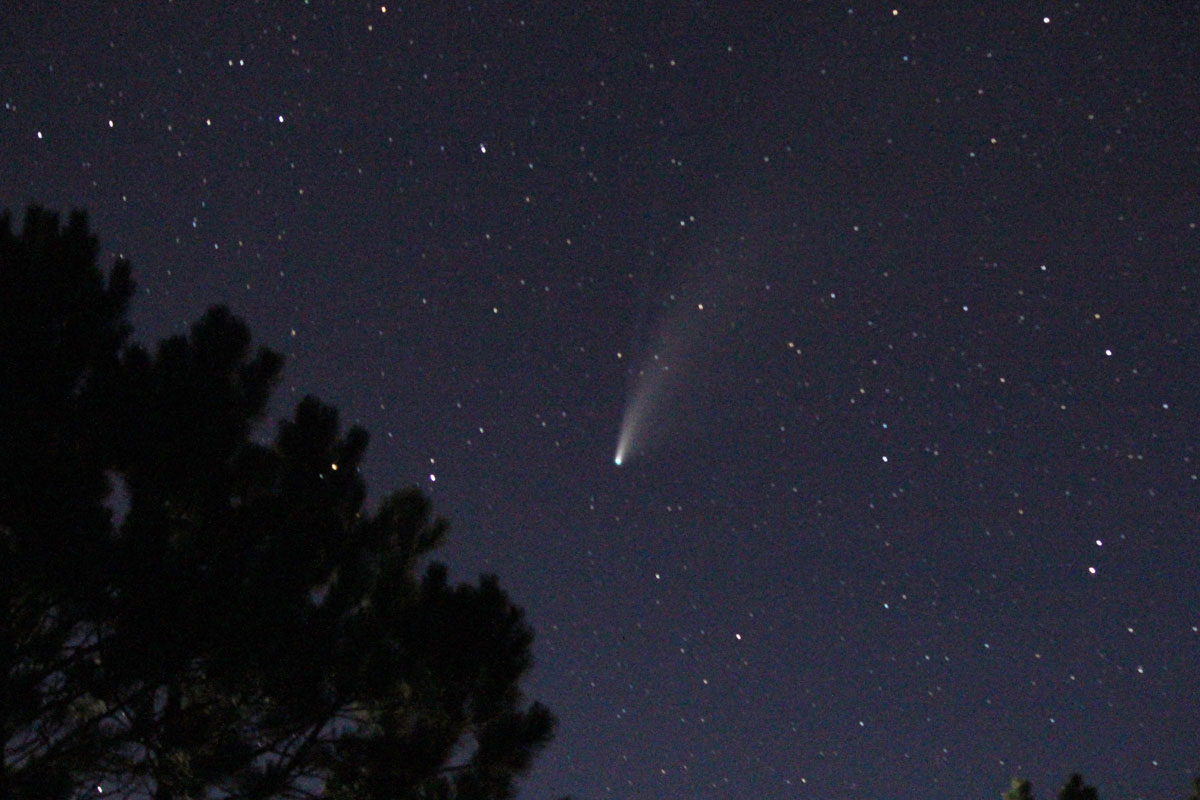 LEFT: A Las Cumbres Observatory image I took of Comet NEOWISE on April 25, 2020, slightly less than one month after its discovery by the NEOWISE mission. RIGHT: I took this photograph of Comet NEOWISE from my residence in New Mexico on the evening of July 21, 2020; this is its approximate appearance to the unaided eye. I had hoped to take additional photographs the following night, the 25th anniversary of the Hale-Bopp discovery, but unfortunately was clouded out.
LEFT: A Las Cumbres Observatory image I took of Comet NEOWISE on April 25, 2020, slightly less than one month after its discovery by the NEOWISE mission. RIGHT: I took this photograph of Comet NEOWISE from my residence in New Mexico on the evening of July 21, 2020; this is its approximate appearance to the unaided eye. I had hoped to take additional photographs the following night, the 25th anniversary of the Hale-Bopp discovery, but unfortunately was clouded out.